The Twiggy Heath Myrtle used to be the Baeckea ( Botanical name ) , but now Scientists can't seem to decide whether it's the Baeckea, Babbingtonia, or Sannantha .....it's an identity crisis !! Either way, we are talking about the same plant. The Baeckea is also very closely realated to the Leptospermum ( Australian Native Tea Trees), which has flowers that look very similar.
Baeckea plants are a small to medium shrub growing to around 2 metres in height. Most species are native to Australia, and have flowers in different colours, they are small and have 5 round petals, and can be white, cream, purple or shades of pink, depending on the species. Leptospermum are variable in height, depending on variety- from small shrubs to larger shrubs and small trees. During Spring and Summer, the plants are covered in masses of flowers which are spectacular, and they look like they're covered in snow. The flowers produce lots nectar, so the bees and wildlife have a great time around the bushes and they are also used for honey production.
Baeckea and Leptospermum are fast-growing plants, and for best results, plant them in the full sun and a light pruning after the main flowering to keep the plants compact. The best climate is cool temperate to warm, but it will tolerate some mild frosts. The plant pictured is a Leptospermum , which is growing in a Sydney Garden.
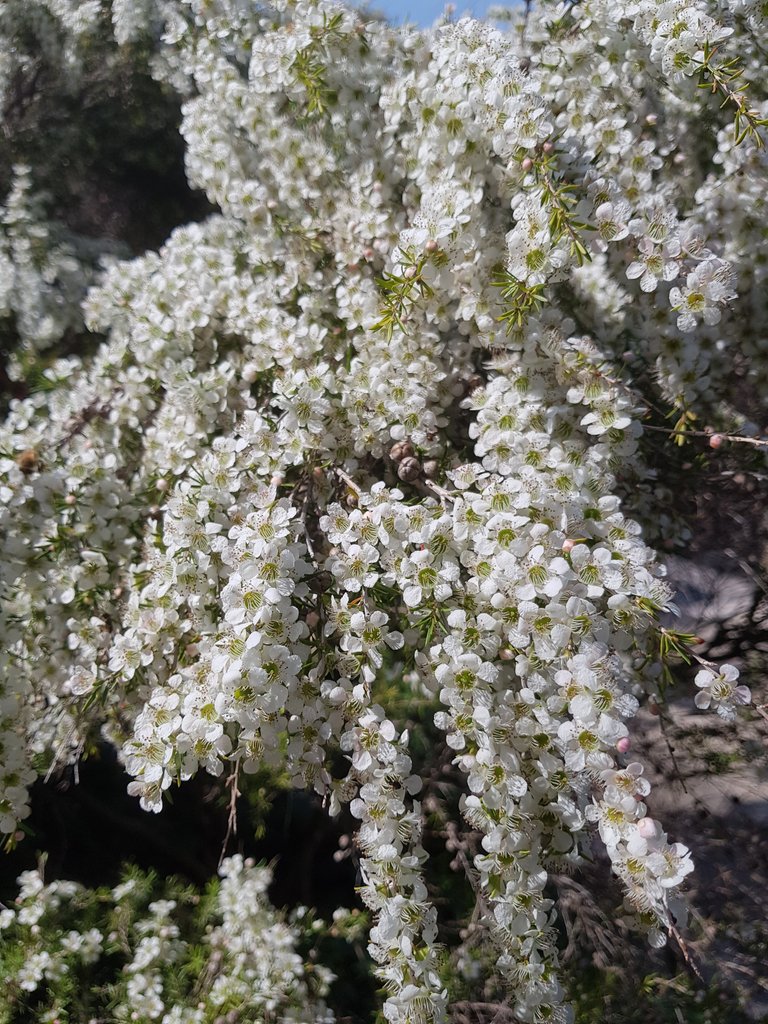
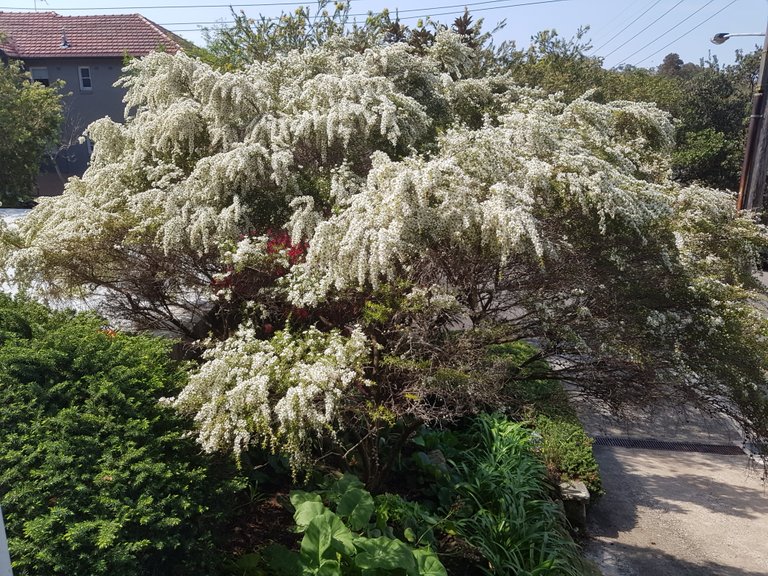
Leptospermum or myrtle New Zealand is an ornamental shrub with green foliage and the Myrtaceae family. Native to Oceania, trees sometimes develop in heights in rocky areas, or in deserts.
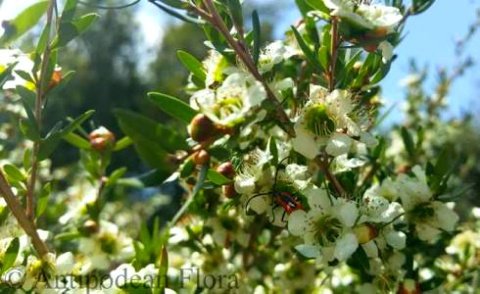
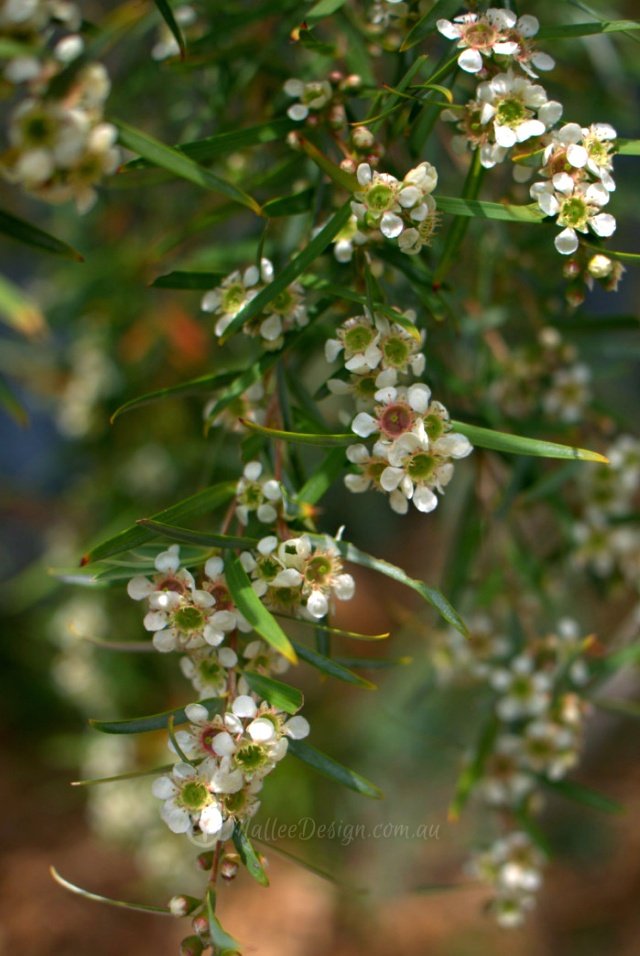
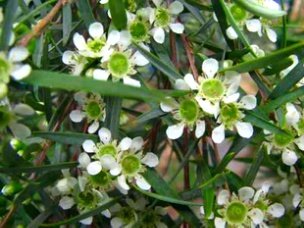
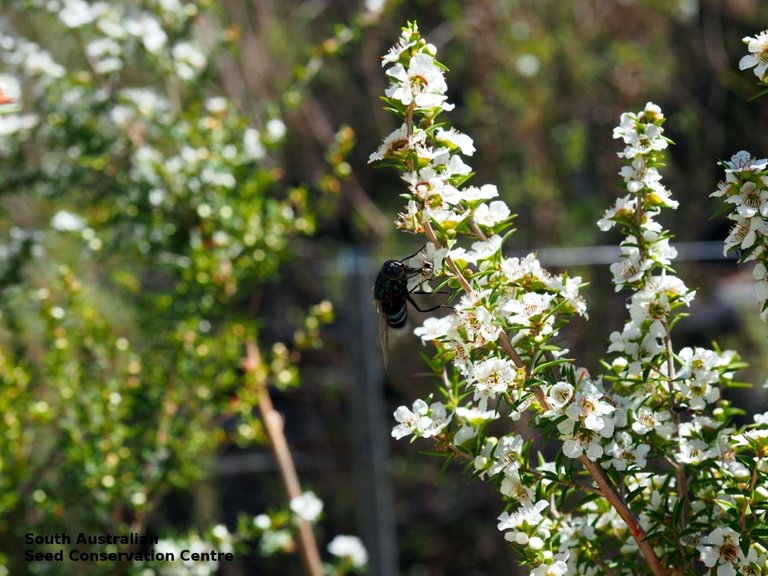
This dry resistant bush is planted in open soil in the sea area or in pots for cooler areas.
Leptospermum is a bush that rarely exceeds 3 m in height. It contains many small, elongated and coarse green leaves, even slightly stinging. Aromatic leaves. Welded flowers are formed from 5 round petals.
Love honey flowers and bushes have an interest in feeding bees early in the season.
Leptospermum can be cut lightly after the end of flowering to rebalance its growth.
Another color from the Leptospermum scoparium:
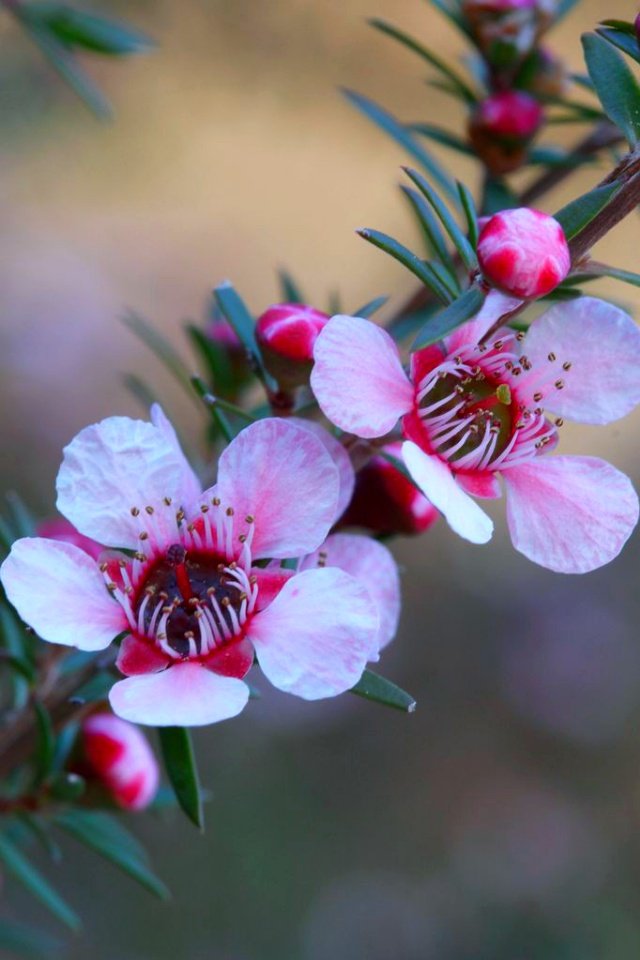
Reference:
Source
Source
Fav. comment Award ! Really nice Pics, thanks.
Seed germination is also possible. The fruit of Baeckea species is a woody capsule, which is dehiscent at maturing. This makes seed collection difficult from plants in natural populations as the seed is small, and once released it is inconspicuous on the ground. Seed can be obtained by bagging green fruit and collecting the seed soon after it is shed. Alternatively, green fruit nearing maturity can be placed in open paper bags to collect the seeds as the fruit matures, or the seed can be dissected from the fruit.
The seed should be surface sown in spring or autumn in a greenhouse and keep the compost moist until germination takes place. When they are large enough to handle, prick the seedlings out into individual pots and grow them on in the greenhouse for at least their first winter. Plant them out into their permanent positions in late spring or early summer, after the last expected frosts.
https://www.anbg.gov.au/gnp/interns-2003/baeckia-gunniana.html
Fav. comment Award ! Thanks for the great Pics .
A beautiful shrub literally consists of the same flowers. A small growing tea tree, Leptospermum flavescens "Cardwell" is great for plants in the garden, and can also be used with a low level of extraction or sorting.

This is a very attractive shrub, leptosperm with masses of pink or white flowers from winter to spring. The stems have a natural bulging or weeping habit, and, given the small room, it looks very elegant, like a separate tree of characters. Flowers form right along the arch, which adds to the general appearance.
Very hardy and tolerant to a variety of conditions, it is a low-speed installation, well suited for use in various areas of landscape design. Suitable for mass plantings in landscaping projects. This form of "Cardwell", which has the best weeping habit and, therefore, the most popular.
https://www.acsgarden.com/plantdir.aspx?id=172
Silly Sausage Award ! Well done for selecting nice Pics.
Shared on twitter promoting good quality content on #Steemit.
Thanks once again for sharing some great photos and bringing great content to the #Steem Blockchain.
Have a great day.
Stephen
#Promo-Steem #steemtalent #JoinSteemit #Steemit
Beckey shrub (Baeckea ) - a plant belonging to the myrtle family, a shrub in height from 1 m, strongly branched from the base. The flowers are small, white, solitary, axillary; buds obratkonicheskie. The leaves are small, opposite, falling. It blooms in April - July. Leaf plates with glands. The fruit is a small box that opens transversely. The plant has a strong pleasant smell. Seeds are small, angular. A boring description of a plant has been obtained. But how beautiful it is :)
http://www.sierraflowerfinder.com/en/d/leptospermum-red/2470
Amazing plant @ctrl-alt-nwo!
George Bentham in 1867 established a broad concept for the genus Baeckea but in recent years studies have shown that, because of differences in the group, many Baeckea species should be placed into other genera, including Ochrosperma, Triplarina, Babingtonia, Euryomyrtus, Kardomia, and Sannantha. Baeckea linifolia is one of a number of species that remained within Baeckea.
B.linifolia is a weeping shrub 1.5 to 2 metres high, usually of "tree" shape with a bare trunk. Leaves are linear and between 6 to 18 mm long and 0.5-1 mm wide. The small tea tree-like flowers are about 5 mm in diameter, white in colour and occur in a massed disply along the weeping branches. Flowering occurs in summer.
This species is reasonably well known in cultivation. It is a very hardy plant in most reasonably drained soils, preferably in full sun of dappled shade. It is tolerant of at least moderate frost and withstands extended dry conditions well, once established.
Seed germinates well without pretreatment but is difficult to collect as it is released from the small seed capsules when ripe. Cuttings of firm, current season's growth strike readily.
A source: http://anpsa.org.au/b-lin.html
Baeckea virgata nana is commonly known as Miniature Baeckea. A small and compact Australian native shrub with deep green linear leaves and clusters of delicate white flowers that bloom abundantly throughout summer.
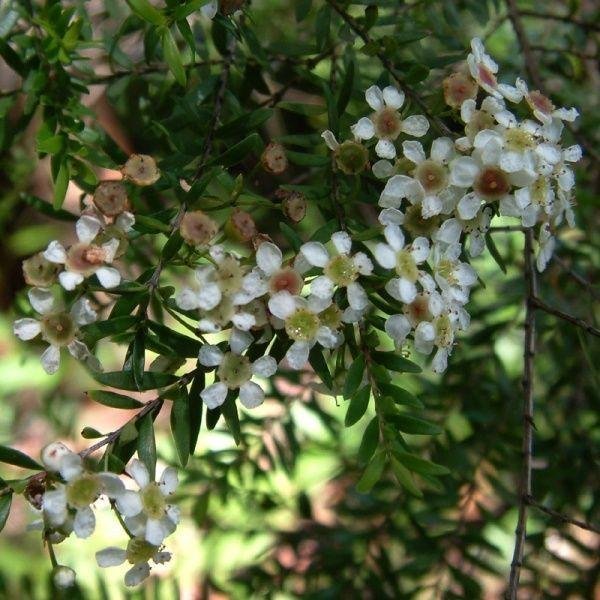
Source
Source
This tough plant is an excellent choice for shrubberies, rockeries, containers and low hedges; providing a suitable habitat for small native birds such as wrens and finches. For optimum results, position is a sunny to partly shaded position, tolerates most soil types as well as periods of drought and frost. Prune well after flowering to maintain a compact shape and promote fresh new growth. Baeckea virgata nana will grow to a height of 50cm and a width of 50cm.
Source
Oh! Tea tree! I love to grow several Tea Tree in my garden! But we can’t find this plant here. I use Tea Tree oil too. Their flowers are very beautiful and delicate. I guess I cannot eat these flowers. Haha!
Posted using Partiko iOS
It is a useful size for small gardens, remaining at a 2 m tree-like shape and only bushy at the base if trimmed for that purpose. This is a shrub not for distant viewing or bold effect but for near planting where the tiny white flowers can be seen, or a leaf bruised now and then for its spicy perfume.
At the Australian National Botanic Gardens examples can be seen in built-up soil mulched with bark chips, and shaded by tall trees. They survived drought years, though growth was sparse and dull, and recovered when regular watering became possible. Light shade is a definite advantage, protecting the top growth from drying out; no winter protection is needed.
Tip growth on the weeping branches is very free, with narrow, even leaves about 2 cm long. They are smooth and waxy, showing numerous transparent dots (oil glands) when magnified. The foliage of a healthy watered shrub shines, turning purple in winter, an advantage of the cold Canberra climate noted on many species in these Gardens.
The tiny, pure white flowers are a perfect shape, with five petals, and resemble Leptospermum (Tea Trees) to which the genus Baeckea is related. All face upwards on the stems and for their size are quite showy, especially on the purplish background, as one of the best flowering times is June to July. A flush of flowers can occur at any time from early February; in fact they are completely absent only during a short rest from late spring onwards.
The seed capsules are like tiny bells on short stalks and they also turn red in ripening, making this a shrub of changing tints. Capsules brought indoors release numerous fine seeds and these or summer cuttings are used in propagation.
Source: https://www.anbg.gov.au/gnp/gnp3/baeckea-linifolia.html
So beautiful they look in collective trees lined up glorious thanks for sharing that :)
Vav !!! Great plant. It looks very beautiful. I have never seen anything more beautiful. Indeed, a very, very beautiful plant.
Beautiful plant my friend and Baeckea gunniana is an evergreen Shrub growing to 1.5 m (5ft) by 2 m (6ft).
It is hardy to zone (UK) 9. It is in leaf all year. The species is hermaphrodite (has both male and female organs).
Suitable for: light (sandy) and medium (loamy) soils and prefers well-drained soil. Suitable pH: acid, neutral and basic (alkaline) soils. It cannot grow in the shade. It prefers moist soil.
Cultivation details
Requires a position in full sun in a fertile moisture retentive well-drained soil[200]. This species is not very hardy in Britain, though it should survive outdoors in the very mildest areas of the country, especially if given a sheltered position. Plants in Australian gardens tolerate temperatures down to at least -7°c[157], but this cannot be translated directly to British gardens due to our cooler summers and longer, colder and wetter winters. The leaves emit a powerful camphor-like scent when handled[245]. This species is very closely related to and perhaps synonymous with B. utilis[157]. A rock garden plant[157], it seems to maintain its prostrate habit even when grown at lower altitudes[157].
Propagation
Seed - surface sow in spring or autumn in a greenhouse and keep the compost moist until germination takes place. When they are large enough to handle, prick the seedlings out into individual pots and grow them on in the greenhouse for at least their first winter. Plant them out into their permanent positions in late spring or early summer, after the last expected frosts. Cuttings of half-ripe wood with a heel, July/August in a frame[200].
Thank you @ctrl-alt-nwo
A source of information: https://pfaf.org/user/Plant.aspx?LatinName=Baeckea+gunniana
Baeckea linifolia
Flax-leaf Heath Myrtle (Baeckea linifolia) is a delicate weeping shrub from moist habitats in eastern Victoria and New South Wales, conspicuous for its very fine, straight leaves and stems. It has proved tough, however, in growing at the Australian National Botanic Gardens and has survived drought well.


It is a useful size for small gardens, remaining at a 2 m tree-like shape and only bushy at the base if trimmed for that purpose. This is a shrub not for distant viewing or bold effect but for near planting where the tiny white flowers can be seen, or a leaf bruised now and then for its spicy perfume.
The tiny, pure white flowers are a perfect shape, with five petals, and resemble Leptospermum (Tea Trees) to which the genus Baeckea is related. All face upwards on the stems and for their size are quite showy, especially on the purplish background, as one of the best flowering times is June to July. A flush of flowers can occur at any time from early February; in fact they are completely absent only during a short rest from late spring onwards.


The seed capsules are like tiny bells on short stalks and they also turn red in ripening, making this a shrub of changing tints. Capsules brought indoors release numerous fine seeds and these or summer cuttings are used in propagation.
If pruned for bushy growth it probably would be tall enough to help in covering a fence - a useful attribute in a new garden. Sprays of cut flowers live well in water, continuing to open and, if desired, cutting can help towards pruning.

References123456
Stunning. I see bee's have a lot of work here.
I would see where the bees would hang around this tree with it's flowers.
Very lovely looking white flowers plant . This plant is beautiful in skin and more beautiful in his nector and honey qualities . Thanks for the blog .
Tree is amazing to watch for sure and here i am seeing an different effect and that is, it's reflecting as this tree is completely covered with beautiful Flower Petals. And closeup of these flowers are just breathtaking to watch and in my opinion if we carefully observe these flowers then we can see an Deep Art. And in my opinion we should go out to explore the nature because, these kind of natural and artful creations are waiting for us. Wishing you an great day and stay blessed. 🙂@ctrl-alt-nwo, In my opinion this particular
Your post was mentioned in the Steemit Hit Parade in the following category:Congratulations @ctrl-alt-nwo!
It is a prolific scrub-type tree and is often one of the first species to regenerate on cleared land. It is typically a shrub growing to 2–5 m (7–16 ft) tall, but can grow into a moderately sized tree, up to 15 m (49 ft) or so in height. It is evergreen, with dense branching and small leaves 7–20 mm long and 2–6 mm broad, with a short spine tip. The flowers are white, occasionally pink, 8–15 mm (rarely up to 25 mm) in diameter, with five petals. The wood is tough and hard.
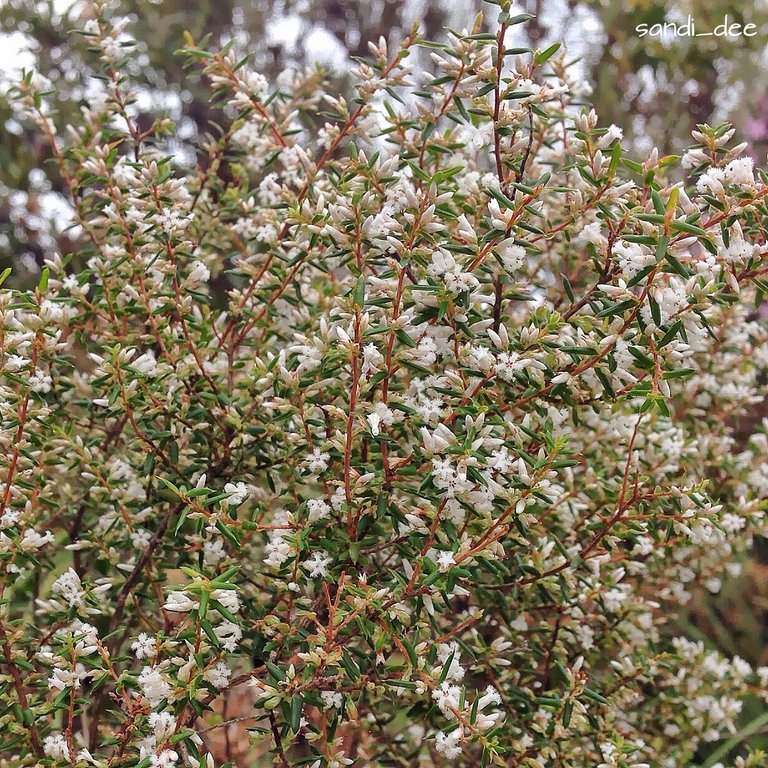
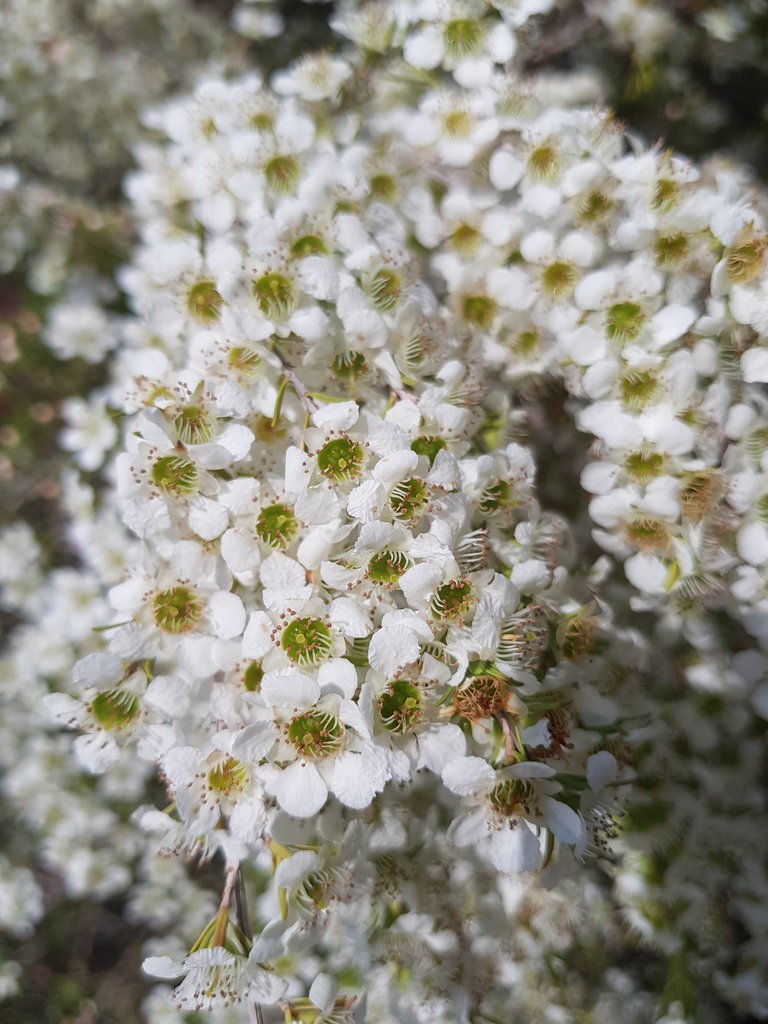

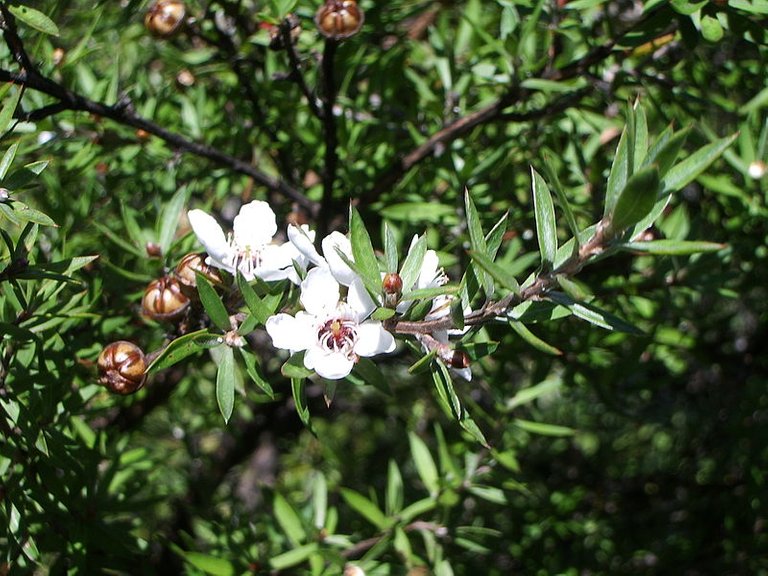
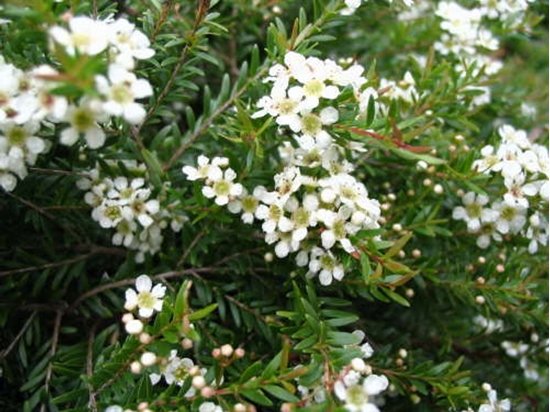
This species is often confused with the related species kānuka (Kunzea ericoides) – the easiest way to tell the difference between the two species in the field is to feel their foliage – mānuka leaves are prickly, while kānuka leaves are soft.[5] Alternatively, the seed capsules of mānuka are large (5-7mm in diameter)
Evidence suggests that L. scoparium originated in Australia before the onset of the Miocene aridity, and dispersed relatively recently from eastern Australia to New Zealand.[4] It has been postulated that on arrival in New Zealand, L. scoparium became established in limited edaphically suitable areas until the arrival of the Polynesian people, whose fire and forest-clearing brought about the low-nutrient-status soils for which it was preadapted in its homeland.[3] It is now more common in New Zealand than it is in Australia. It is found throughout New Zealand, but is particularly common on the drier east coasts of the North and South Islands, and in Australia in Tasmania, Victoria and New South Wales.
Source
Genus Baeckea
Description: Shrubs or small trees.
Leaves opposite, margins entire, crenate or finely ciliate-toothed, shortly petiolate.
Inflorescences axillary, 1-flowered. Flowers 5-merous, white; bracteoles 2, caducous or persistent. Calyx persistent in fruit. Petals free. Stamens 4–12; anthers opeining by longitudinal slits, gland-tipped. Ovary half-inferior, (1-)2-(-3) locular; placentation axile; stigma capitate.
Fruit a loculicidal capsule.
Distribution and occurrence: World: 14 species, eastern Australia and Asia. Many previous records from eastern Australia and all from western Australia and New Caledonia are now segregated into other genera.
http://plantnet.rbgsyd.nsw.gov.au/cgi-bin/NSWfl.pl?page=nswfl&lvl=gn&name=Baeckea
Baeckea virgata Compacta
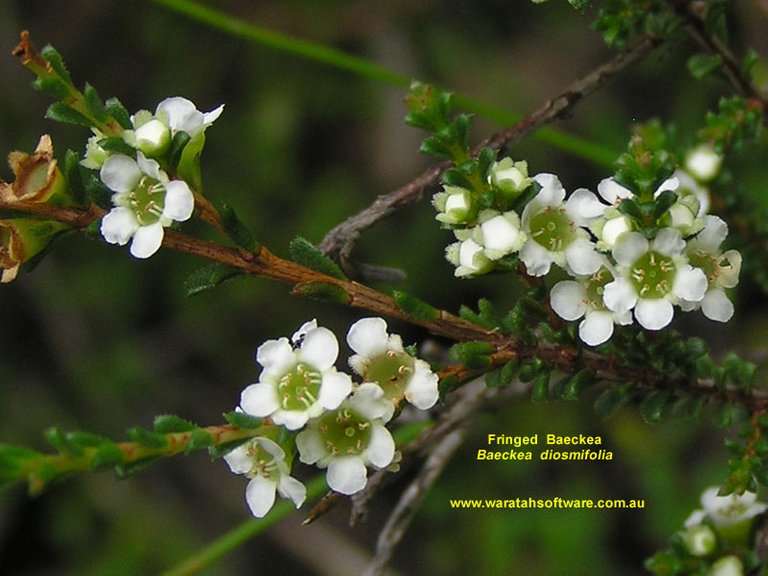
Compact flowering shrub to 75cm, ideal for coastal planting and native gardens. New bronze leaves, masses of white flowers attract birds. Excellent for low hedges or ground cover.
We are prohibited to sell this product to South Australia.
Details
Baeckea virgata Compacta
DESCRIPTION: Twiggy myrtle. Compact native shrub bearing masses of small white flowers. New growth is a rich bronze colour maturing to green foliage.
USE IN: Informal hedging, rockeries and native gardens. Beautiful for attracting bird-life to the garden.
LOCATION: Plant in well drained soil in a full sun position in the garden. Tolerates dry periods and frost once established.
CARE: Mulch and water regularly until the plant is established, usually around 12 weeks. Prune yearly to encourage dense growth and fertilise with a slow release native fertiliser in spring.
HEIGHT & WIDTH: .75 cm H x 1 m W.
PLEASE NOTE: These plants are tube-stock plants, with the benefit of being a young plant they will establish quickly in your garden. The average size of your plants will be 15 -25 cm including pot. Pot size: 42 mm wide and 80 mm high.
We are prohibited to sell this product to South Australia.
http://www.australianplantsonline.com.au/baeckea-virgata-compacta.html
A beautiful, fairy-tale atmosphere. It reminds our Polish cherries in the spring.
During autumn, it's great to look at blooming trees, it adds energy and you gave it to me :)
Greetings
A hardy evergreen shrub that bears masses of small white flowers in summer. The foliage is soft and fine leaved. Grows to around 2 meters high and wide.
Very hardy suitable for coastal plantings and boggy sites and makes an excellent hedge due to its lovely dense foliage.
The leaves can be steeped in water to make an aromatic tea, Honey producing plant.
Dry tolerant once established, frost and moderately salt tolerant. Seed require no pre-treatment. Germinates in 2- 3 weeks at 20c..
https://edibleoz.com.au/products/twiggy-heath-myrtle-baeckea-virgata-seeds
Baeckea gunniana occurs in alpine and sub-alpine sites, and is generally found in heath and sedgelands in wet rocky sites or bogs, above 1000 metres altitude. It is found chiefly south from the Kosciuszko district, and also at Mt Ginini in the ACT, and is also found in New South Wales, Tasmania and Victoria, where it is confined to alpine and subalpine areas where it is commonly found along streams and in bogs.
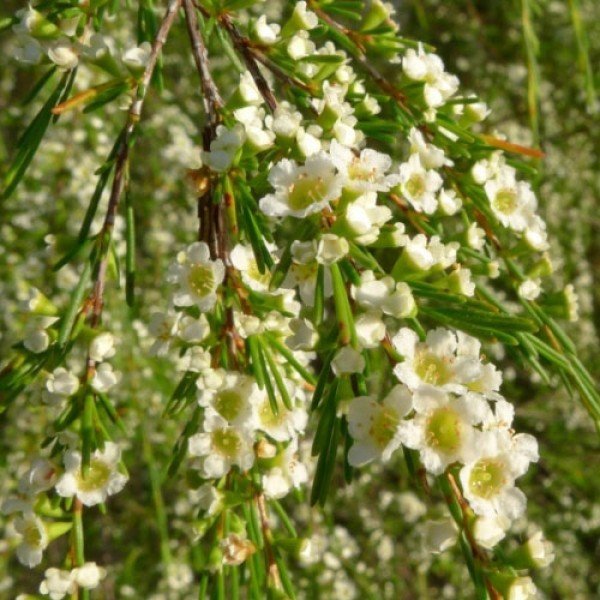

image source
Baeckea gunniana is a glabrous, densely branched and aromatic shrub around 0.5-1 metre in height, although it can reach 2 metres in lower altitudes. It is sometimes prostrate or spreading over rocks and boulders. The leaves are opposite, small and crowded, and oblong to obovate shaped with a blunt apex and range from 2-4 mm long and 0.6-0.8 mm wide. The flowers are white in colour, and are small and numerous, being around 4-5 mm in diameter and borne solitary in the upper leaf axils.
image source
The mass floral displays found in the genus Baeckea, coupled with the general ease of cultivation, have ensured that a number of species are sought after for landscaping or for placement in rockeries. The tendency of a number of species to flower over summer when few Australian plants flower is also an attractive feature.
content source
It is a useful size for small gardens, remaining at a 2 m tree-like shape and only bushy at the base if trimmed for that purpose. This is a shrub not for distant viewing or bold effect but for near planting where the tiny white flowers can be seen, or a leaf bruised now and then for its spicy perfume.
At the Australian National Botanic Gardens examples can be seen in built-up soil mulched with bark chips, and shaded by tall trees. They survived drought years, though growth was sparse and dull, and recovered when regular watering became possible. Light shade is a definite advantage, protecting the top growth from drying out; no winter protection is needed.
source
Shrubs or trees. Leaves opposite, sessile. Flowers bisexual, axillary, solitary or several arranged into cymes, white [or red], small, 5-merous, shortly pedicellate or sessile. Bracteoles 2, small, caducous. Calyx tube campanulate or semiglobose, usually adnate to ovary; lobes 5, membranous, persistent. Petals 5, suborbicular. Stamens 5-10, or 20, shorter than petals; filaments short; anthers dorsifixed. Ovary inferior [semi-inferior or rarely superior], 2- or 3-loculed; ovules several per locule. Style short; stigma slightly expanded. Capsule dehiscing, segments 2 or 3, 1-3-seeded or rarely more. Seeds reniform, angular; embryo straight; endosperm absent; cotyledons small.
source
Plant is looking very beautiful. White flowers are always looking awesome . This is the main quality of this paint
Distribution
Beard’s Provinces: Eremaean Province, South-West Province.
IBRA Regions: Carnarvon, Geraldton Sandplains, Yalgoo.
IBRA Subregions: Edel, Geraldton Hills, Tallering, Wooramel.
Local Government Areas (LGAs): Chapman Valley, Greater Geraldton, Murchison, Northampton, Shark Bay.
source
magoo-2 found a series of multi accounts of a same owner is following your articles to cheat your generous rewards.
magoo-2 found these accounts are suspicious & can be multi accounts of a single owner. Conclusion is based on last 30 days transactions:
@itamarr @chocosteem @berwyn @benedetto @bronter @hungduan
magoo-2
Check our latest multi comment spam update report
Beautiful flowers. I love flowers.
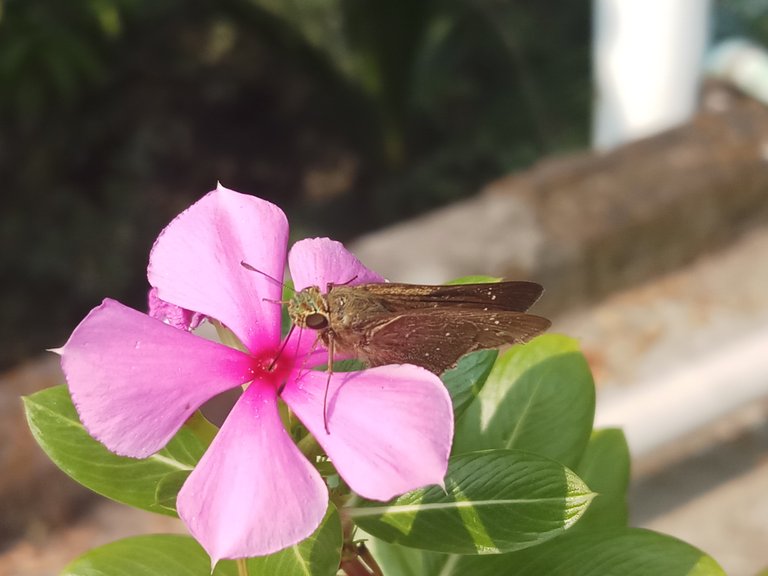
My flowers photography
Native weeping shrub, lovely for informal hedging and wildlife gardens. White flowers in abundance in spring and summer. Easygoing as to soil and climate conditions, so will thrive in most locations.
source
magoo-2 found a series of multi accounts of a same owner is following your articles to cheat your generous rewards.
magoo-2 found these accounts are suspicious & can be multi accounts of a single owner. Conclusion is based on last 30 days transactions:
@itamarr @chocosteem @berwyn @benedetto @bronter @hungduan
magoo-2
Check our latest multi comment spam update report
Baeckea gunniana - Schauer.
Common Name
Family Myrtaceae
USDA hardiness 8-11
Known Hazards None known
Habitats Bogs and wet rocky sites, especially by water courses in alpine regions to 1800 metres.
Range Australia - New South Wales, Victoria, Tasmania.
source
magoo-2 found a series of multi accounts of a same owner is following your articles to cheat your generous rewards.
magoo-2 found these accounts are suspicious & can be multi accounts of a single owner. Conclusion is based on last 30 days transactions:
@itamarr @chocosteem @berwyn @benedetto @bronter @hungduan
magoo-2
Check our latest multi comment spam update report
Shrubs or trees. Leaves opposite, sessile. Flowers bisexual, axillary, solitary or several arranged into cymes, white [or red], small, 5-merous, shortly pedicellate or sessile. Bracteoles 2, small, caducous. Calyx tube campanulate or semiglobose, usually adnate to ovary; lobes 5, membranous, persistent. Petals 5, suborbicular. Stamens 5-10, or 20, shorter than petals; filaments short; anthers dorsifixed. Ovary inferior [semi-inferior or rarely superior], 2- or 3-loculed; ovules several per locule. Style short; stigma slightly expanded. Capsule dehiscing, segments 2 or 3, 1-3-seeded or rarely more. Seeds reniform, angular; embryo straight; endosperm absent; cotyledons small.
http://www.northqueenslandplants.com/images/Tas%20Dove%20Lake%20GPS%201384%20RF%20-%20%20Baeckea%20gunnii%20FN%20%201917%20(5).JPG
source
Aww..😱🌺 💕
Very very lovely flower photos......📷 I always love your photography and post my dear friend.@ctrl-alt-nwo 💞💕 love you 💕
Genus Baeckea Family Myrtaceae
Description: Shrubs or small trees.
Leaves opposite, margins entire, crenate or finely ciliate-toothed, shortly petiolate.
Inflorescences axillary, 1-flowered. Flowers 5-merous, white; bracteoles 2, caducous or persistent. Calyx persistent in fruit. Petals free. Stamens 4–12; anthers opeining by longitudinal slits, gland-tipped. Ovary half-inferior, (1-)2-(-3) locular; placentation axile; stigma capitate.
Fruit a loculicidal capsule.
source
magoo-2 found a series of multi accounts of a same owner is following your articles to cheat your generous rewards.
magoo-2 found these accounts are suspicious & can be multi accounts of a single owner. Conclusion is based on last 1 year transactions:
@alves @devid1996 @mhyeasin @sadikulaziz @msena @kilee @ripon1 @googlefighter @melianasagita @ashasikder @hichako
magoo-2
Check our latest multi comment spam update report
Beautiful flower plant. Too many little little white flowers are looking awesome . Green color in the flowers is also looking nice.
Your name closed my s list.
Baeckea 'Clarence River'
Native weeping shrub, lovely for informal hedging and wildlife gardens. White flowers in abundance in spring and summer. Easygoing as to soil and climate conditions, so will thrive in most locations.
Baeckea virgata 'Clarence River'
DESCRIPTION: Twiggy myrtle. Native shrub with weeping habit, bearing masses of small white flowers along the branches in Spring and Summer. Foliage is deep green and slender like grass.
USE IN: Informal hedging, screening, native gardens. Good for attracting bird-life to the garden.
LOCATION: Plant in a sunny or part-shaded position in the garden. Tolerates dry periods, wet soil, and frost once established.
CARE: Mulch and water regularly until the plant is established, usually around 12 weeks. Prune yearly to encourage dense bushy growth and fertilise with a slow release native fertiliser in spring.
HEIGHT & WIDTH: .2-3M H x 1-2M W.
PLEASE NOTE: These plants are tube-stock plants, with the benefit of being a young plant they will establish quickly in your garden. The average size of your plants will be 15 -25 cm including pot. Pot size: 42 mm wide and 80 mm high.
http://www.australianplantsonline.com.au/baeckea-clarence-river.html
Hello @ctrl-alt-nwo, nice to meet you again. the Baeckea plant that you show I have never seen it. this is really a very thick flower plant. And it looks beautiful too.
They look very nice i didn't know there are those kind of trees in Australia
have a winter image in summer. it provides a very beautiful image